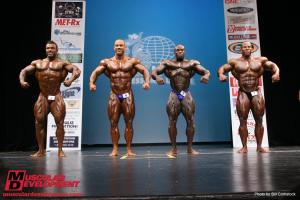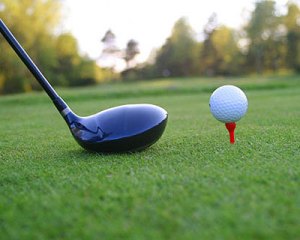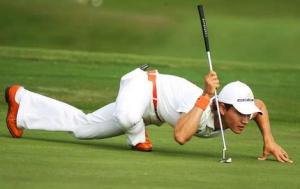 As children head back to school in September, a disturbing new trend is emerging… young children are suffering from back pain much sooner than generations before them. A major contributing factor seems to be a heavy backpack. Most parents (and children) are unaware of the potential injury that heavy backpacks can cause.
As children head back to school in September, a disturbing new trend is emerging… young children are suffering from back pain much sooner than generations before them. A major contributing factor seems to be a heavy backpack. Most parents (and children) are unaware of the potential injury that heavy backpacks can cause.
A recent news release by the American Physical Therapy Association in April 2009 revealed that more than 50 percent of children surveyed carry backpacks that are too heavy. If a backpack is stuffed with heavy books and/or worn incorrectly, the biomechanical pressure on the spine increases dramatically. As a result, your child may lean forward to compensate. This can cause shoulder, neck, or back pain.
To help your child’s back, here’s what you can do:
- Pack smart. Make sure that your child gets in the habit of cleaning out their bag daily, leaving things that aren’t needed at home or in their locker.
- Distribute weight evenly. Teach your child to wear both straps, not just one. This helps to distribute the weight evenly.
- Pay attention to your child’s posture. If your child is slouching or leaning over to one side, chances are that the backpack is too heavy. If there are any signs of pain, tingling, or numbness consult your doctor or physical therapist immediately.
- Get the “right” backpack. Consider getting a backpack with multiple compartments to keep the weight more evenly distributed. Make sure there are 2 wide and well-padded straps that add comfort to the shoulder. If the bag has one strap, the weight distribution is uneven, causing the child to lean forward or to the side. Also, tighten the straps so the backpack is close to the body and rests in the middle of the back, not at the buttocks.
- Lift the backpack properly. Teach your child how to lift the backpack correctly by bending at the knees and lift with both hands before putting it on.
- Reduce the load. Doctors and physical therapists strongly recommend children carry bags that are no more than 10-15% of their body weight. However, less is always better. This means that if your child weighs 100 lbs., the backpack should weigh no more than 15 lbs. to avoid injury.
Contact us to learn more about the correct posture and movement patterns for children in your household.
5 Top Reasons to Exercise
 Reason #1: To Reduce Pain
Reason #1: To Reduce Pain
Individualized, regular exercise (the kind prescribed by your physical therapist) is a great way to reduce muscle and joint pain. For example, strengthening your core can decrease persistent low back pain and you’ll protect yourself against future injury. It’s amazing how many people who are resigned to a life of chronic pain start to find relief after starting an exercise program provided by one of our experienced physical therapists. If you are not sure where to begin, we will be happy to assist you in the creation of a safe, effective exercise plan.
Reason #2: To Increase Muscle Tissue Reason
More muscle means more strength. Don’t confuse this with large, unsightly muscles.
The point is that more strength allows you to complete your day to day tasks with ease. Imagine if simple things like walking, going up the stairs, picking up groceries, or playing with your children became easier and more enjoyable. What would that do for you on a daily basis?
A well designed, progressive exercise plan helps tone and build muscle mass. Think of lean muscle tissue as ‘gold’ protecting your bones and joints and fat as ‘jelly’ or dead weight on your body.
Reason #3: To Drop Pounds of Fat
The best benefit of exercise is fat loss. It is no secret that a combination of exercise and a balanced meal plan is the best known way to lose fat. Here’s what fat loss can do for you:
- Your clothes fit better
- People around you begin to compliment you on your new appearance
- When you look in the mirror, you look several years younger
- Your energy levels soar
- You feel great!
Reason #4: To Control Blood Sugar
 Regular exercise helps stabilize blood sugar levels. If you or someone you know has type 2 diabetes (or is at risk for type 2 diabetes) exercise will help your body to better utilize sugar since exercise positively impacts insulin sensitivity.
Regular exercise helps stabilize blood sugar levels. If you or someone you know has type 2 diabetes (or is at risk for type 2 diabetes) exercise will help your body to better utilize sugar since exercise positively impacts insulin sensitivity.
A combination of weight loss and improved blood glucose control has several health benefits. You should consult your doctor before you begin any exercise with the intention to control your blood sugar.
#5 To Lower Colesteral Levels
Exercise helps your heart in 2 ways:
1. Weak heart muscles pump a relatively small amount of blood with each beat. Essentially, your heart is putting in a lot of effort with every beat. By exercising, you strengthen your heart muscles so they pump more blood with less effort; this decreases the pressure on your arteries.
2. Exercise increases HDL (the “good” cholesterol) levels in some people. This decreases your risk for heart disease. Other heart disease risk factors such as weight, diabetes, and high blood pressure also improve with regular exercise.
A Healthy Happy Getaway
Whether you go on a cruise, visit family or friends, or plan a trip to the beach it’s important to remember a few critical things to remain injury-free and pain-free this summer. So before you pack your bags for your next trip, please read the following 4 tips to come home relatively pain-free.
Make the Decision Before you leave home, make the decision to continue with the exercises prescribed to you by your physical therapist. These exercises are meant to keep you healthy and pain free.
As you enjoy your vacation, think of exercise as an ‘investment’ in your physical health and avoid the temptation of skipping your exercises.
Keep Moving It’s easy to spend your vacation days just lounging by the beach or the pool. The problem is inactivity contributes to joint stiffness and pain. Try some of these strategies:
- – Take a brisk walk for 15-20 minutes; daily if you can
- – Try to use the stairs whenever possible instead of the elevator
- – If your hotel has a pool, try swimming a few laps
- – Take the outline of your home exercise program with you – the one specifically designed for you by your physical therapist
Physical Therapy on Vacay
We want you to return recharged from your summer vacation.
When you follow our advice you’ll experience a decrease in pain and an increase in muscle strength and joint mobility.
Imagine coming back refreshed, ready to do the things you really like; playing with your kids and doing fun things outdoors with your friends and family this summer. Make this the summer that you take charge of your health and address that nagging pain.
We are here to help you plan your exercise routine this summer. Schedule an appointment with us today and have a fabulous summer.
Indoor vs. Outdoor Exercise
 Whether you exercise in the comfort of your own home, a gym or prefer to be outdoors, there are important considerations between indoor and outdoor workouts that you should be aware about. Your physical therapist will be able to design an exercise program with enough variation to keep you healthy and motivated throughout summer….
Whether you exercise in the comfort of your own home, a gym or prefer to be outdoors, there are important considerations between indoor and outdoor workouts that you should be aware about. Your physical therapist will be able to design an exercise program with enough variation to keep you healthy and motivated throughout summer….
Advantages of exercising indoors:
- Climate control: Most people choose to exercise indoors to escape extreme temperatures and humidity.
- Environment control: Accidents can happen anywhere, but the risk of injury decreases with indoor equipment.
- Intensity control: Machines like the treadmill, elliptical and bicycle allow you to modify your speed, incline/level and duration of exercise. In addition;
● These machines can also lower the impact on your feet, knees, hips and spine. This is something outdoor trails cannot always provide.
● Most aerobic machines are equipped with heart rate monitors, which help you determine the intensity of your workout. If you are unsure of how high or low your heart rate should be while exercising, call us for more information.
● Precise muscle targeting: Several machines in a gym can help to strengthen certain muscle groups of the body (like quadriceps or biceps) and allow you to restore muscle imbalance.
When the weather’s great, sunshine can do wonders for a workout. Exercises like swimming, walking, running, cycling, or playing sports (like soccer, basketball, tennis and golf) with your friends and family is a wonderful way to challenge your muscles. Sunlight is good for your skin and tends to uplift the mind and body.
When comparing outdoor walking with walking on a treadmill, here are some differences you may not be aware of:
● Outdoor walking challenges your balance and stability.
● Slopped sidewalks and roads challenge your balance.
● Curbs and steps challenge stability and strength.
● There may be several sudden starts and stops with people or traffic lights, for which you work your muscles in a different way by coming to a complete stop, then starting again from zero.
● Dodging people, their children and their pets will help challenge a side-to-side motion as well as forward motion.
- Exposure to sunlight is an easy way for you to get your daily dose of Vitamin D and some fresh air. Remember to always wear sunscreen when exercising in the sun.
- Being outdoors can also give you a chance you have social or family gatherings while combining physical activity.
Walk along a nearby park or beach, or ride a bicycle at a park or your favorite trail. The sounds of nature can be quite healing and offer you a peaceful experience unlike an indoor workout. Take your family to the park and try doing some jumping jacks or jump rope while your kids are on the monkey bars. Take advantage of the wide-open space and quiet moments this summer.
Exercising without Injuries
Exercising without Injuries
The intensity at which you exercise will determine what you get out of it. Do you want to lose body fat? If so, you need to exercise at a different intensity compared to someone who trains to build muscle / tone up.
Unlike bones and joints, muscles have a greater blood supply. Muscles can regenerate and respond quickly to the demands of exercise. The goal of all your exercise-related efforts should be to strengthen muscles (expect occasional soreness) and avoid overload of the bones and joints (likely to cause pain and injuries). Typically, exercising with weights can cause soreness, which is a dull aching pain in the muscles. This soreness generally subsides in a 2-3 days, during which your muscles get a chance to rest and emerge stronger.
On the other hand, aerobic exercises like walking, cycling, and swimming typically do not cause muscle soreness. They serve a different purpose, and are invaluable in conditioning your heart and lungs.
Difference Between Sorness and Pain
Soreness usually occurs the day after exercise due to an overload of exertion on your muscles, and the release of stored chemicals from your muscles. This is the reason why soreness sometimes gets worse a day or two after exercise. This is a phenomenon called “Delayed Onset Muscle Soreness” (DOMS). It is more likely to occur if you try new exercises or exert yourself more than you should. You will feel mild discomfort and not necessarily pain which should subside with rest. 
It’s important to remember that if you do the same exercise over a period of time, the level of soreness will decrease as your body adapts to it. This is why we change your exercise routine every 3 to 4 weeks to help you gain maximum benefit at all times.
On the other hand, pain after exercise tends to be sharp and localized around one area. It also tends to persist and sometimes get worse. You should never exercise ‘through the pain’ since this may cause injuries. If you experience pain during exercise, give us a call right away so we can determine the cause of your pain and help you manage it.
Get the Golf Game you Want
 Posture, fitness, and flexibility are critical to help remain fit and injury-free for any sport, particularly golf.
Posture, fitness, and flexibility are critical to help remain fit and injury-free for any sport, particularly golf.
The achievements of professional golfers like Tiger Woods, Phil Mickelson and Lorena Ochoa highlight a new athleticism associated with a sport that was once considered “leisurely.” Today’s men and women golfers, both amateurs and professionals, are training to be stronger and more flexible, capable of far powerful swings than ever before.
According to the American Physical Therapy Association (APTA), awareness of proper posture and the importance of fitness and flexibility are just as important for weekend golfers as they are for professional athletes. Most athletes, including golfers spend thousands of dollars each year on new and improved equipment, but the most important piece of equipment is the human body.
Did you know?
- There are over 35 million people that play golf in the United States alone. Golfers need to take the time to work at their game and their conditioning if they want to excel in the game. Golfers should have access to a physical therapist who can assess their physical abilities and provide individualized training programs that address muscle imbalances, body mechanics, strength, posturing and cardiovascular fitness.

Golf Conditioning By Your Physical Therapist:
“I am 77 years old and have finally found a physical therapist that understands and focuses exclusively on my balance problem. The staff is very thoughtful and knowledgeable, and everything is handled on a very professional basis. Most important is the fact that I can really tell the difference after only eight weeks of treatments.”
Roland G. Ley
- There has been a significant increase in injuries among professional golfers, primarily because of the increased physical stress and intense training associated with the sport. Strength, flexibility, and endurance are just as important as exceptional driving distance and keen putting skills.
- It is now the norm, not the exception, for golf enthusiasts to work with physical therapists to improve. For golfers to improve their swing, it is vital that these programs be tailored to their individual skills. There are certain types of training that may actually hinder – not help – athletes. What works for someone else may not work for you!
Call us today to find out what you’re missing in your training for all sports, not just golf!
- Professional golfers make it look easy, but the golf swing is actually one of the most difficult and complicated movements in all of sports, requiring stability in some joints and flexibility in others. The ability to coordinate motion, strength, and function throughout the swing play a large role in preventing injuries. A better swing means a more accurate ball strike, greater distance, and less stress on the muscles and joints.
- Our physical therapists work with individuals in all sports. We have observed that recreational golfers often complaining of spine-related injuries, including upper and lower back, shoulder and neck pain. Leisure golfers attempt to swing with the speed and force of professional athletes, but did you know that with each swing 7 to 8 times a golfer’s weight is directed into the spine?
- With this kind of force, it’s easy to damage discs and strain muscles. Multiple core (not just abdomen) stabilization exercises are critical for golfers. Pilates programs are an example of excellent injury-prevention tools that can ultimately help golfers improve their performance.
- Golfers of all ages and abilities should make a habit of the following:
- Warm up and stretch before teeing off. Spend at least 20 minutes warming up and stretching all the major muscle groups, especially the back and extremities, before practice or play. Don’t wait until you are on the course before stretching because that is neither practical nor conducive to a thorough stretch.
- Don’t forget the cardiovascular conditioning. Fatigue can result in poor performance due to a lack of coordinated body movements. To keep endurance up and muscles warm and conditioned, we suggest golfers walk the course whenever possible, as continued aerobic conditioning is an essential component of golf fitness.
Thank you for reading. Call us today to see what you are missing to help you improve your game (and your swing)!
657 Golf Rd. #303, Arlington Heights, IL 60005 ● Info@ProgressivePT.org ● Phone: 847.758.1100
Life in Balance
 Physical Therapy is often associated with the idea of “rehab” after a severe injury or surgery. However, the more we discover about how the body functions, the more it becomes apparent that physical therapy, coupled with nutrition and regular exercise is all a part of keeping your health. As the saying goes, “an ounce of prevention is worth a pound of the cure!”
Physical Therapy is often associated with the idea of “rehab” after a severe injury or surgery. However, the more we discover about how the body functions, the more it becomes apparent that physical therapy, coupled with nutrition and regular exercise is all a part of keeping your health. As the saying goes, “an ounce of prevention is worth a pound of the cure!”
Progressive Physical Therapy believes that our bodies want to, and are able to heal themselves if we let them. Our pain is telling us that something needs to change, and a great physical therapy program is the tool to do that.
We’re going to use this site to bring you the latest trends and ideas in nutrition, fitness, and wellness for all ages and athletic levels. Hope you’ll join the conversation!



